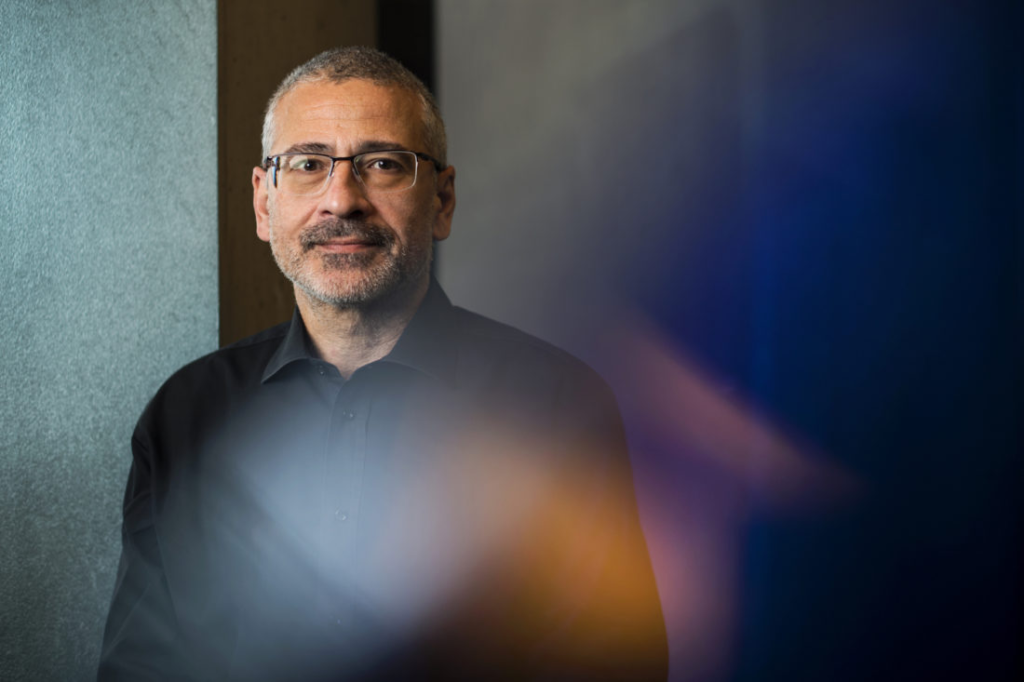The World Health Organization on Thursday declared the current coronavirus outbreak a public health emergency of international concern. The virus, designated 2019-nCoV, has infected more than 9,800 people in China and killed more than 200, with roughly 140 cases appearing in at least 18 other countries on four continents.
“We are at a crossroads, in which two things are possible,” says Alessandro Vespignani, who directs the Laboratory for the Modeling of Biological and Socio-technical systems at Northeastern. “Either the screening, detection, and isolation in China will be able to contain the epidemic there, or it will be a global issue. And this will be decided in the next couple of weeks.”
The disease was first detected in Wuhan, China, in December 2019. Last week, Chinese authorities shut down all transportation in Wuhan, quarantining the city of 11 million people. Quarantines of other Chinese cities followed. Russia closed its border with China, and several other countries have suspended travel to the area. On Thursday, the U.S. issued its highest level warning, advising people not to travel to the country.
Vespignani says these efforts are likely slowing the spread of 2019-nCoV to other countries, as scientists rush to learn as much about the new disease as possible.

ssandro Vespignani, Sternberg Family Distinguished University Professor and director of the Network Science Institute at Northeastern. Photo by Adam Glanzman/Northeastern University
“It provides some time for the international community to better understand the virus,” says Vespignani, who is the Sternberg Family Distinguished University Professor of physics. “But this is not something that can be done indefinitely within China and internationally.”
Vespignani has been working with an international collaboration of researchers to try to predict the potential spread of the disease. Their prediction map is publicly available and constantly being updated with information coming from China and other countries.
Even in the best-case scenario, he says, researchers expect to see an estimate of 50,000 cases in China before 2019-nCoV is contained.
“This is something that is going to stay for a long time, unfortunately,” Vespignani says. “It’s not a matter of today or tomorrow or next week, this is going to stay for a few months and, depending on what happens, even longer.”
But that doesn’t mean that people should be panicking, Vespignani says.
“Those numbers that we get from China are scary, because you talk about tens of thousands of cases, but we’re talking about a country with 1.3 billion people,” Vespignani says. “The incidence is still very small, even there.”
Determining the characteristics of the disease and how far it may spread requires good data. And while China has been openly sharing information with the international community (a shift from the way it handled the SARS epidemic in 2003), learning about a new disease takes time.
“There’s a number of things that we don’t yet understand well enough,” says Samuel Scarpino, an assistant professor in Northeastern’s Network Science Institute. “One of them is the case fatality rate. It’s a very hard number to estimate, especially early on. We know more now about the incubation period, and the amount of time that someone is infectious, but that’s only been in the last few days that we really started to get good, reliable estimates of that.”

Samuel Scarpino assistant professor in the Network Science Institute. Photo by Adam Glanzman/Northeastern University
Scarpino is working with a group of researchers at Boston Children’s Hospital, HealthMap, Tsinghua University, and other institutions to compile data about individual cases of 2019-nCoV in one place. Their data includes the age of infected individuals, when they began to show symptoms, their travel history, whether they recovered, and other details which are organized into a map.
“The information is coming from all over the place,” Scarpino says. “From news sources, from public health officials from, from hospitals—basically we’re pulling from all publicly available information that we can access online.”
Visualizing that data can help researchers understand the spread of a disease and implement strategies to slow or stop it. It’s one aspect of a global effort to control the epidemic.
“One of the things that we’re seeing is a very robust, rapid public health response,” Scarpino says. “We basically didn’t even know what this thing was two weeks ago, and now we have something like 40 genomes that are online and cases that are being collected and analyzed all over the world.”
Scarpino and his colleagues are also trying to use the information in these various genomes to trace the origin of the disease back to its source.
“We’re sure this isn’t going to be the last novel infectious disease outbreak that we deal with, maybe not even this year,” Scarpino says. “Knowing where this thing came from, what things led up to the spread starting, is going to be really important for how we continue to monitor for future outbreaks.”
And what can we do in the meantime? Get a flu shot, Scarpino says. Influenza and pneumonia are the eighth leading cause of death in the U.S.
“That way, you don’t get sick and end up in the ER,” Scarpino says. “If we do have an influx of novel coronavirus cases…. there will probably be novel coronavirus cases there.”
This story was originally published on News@Northeastern on January 30, 2020.

